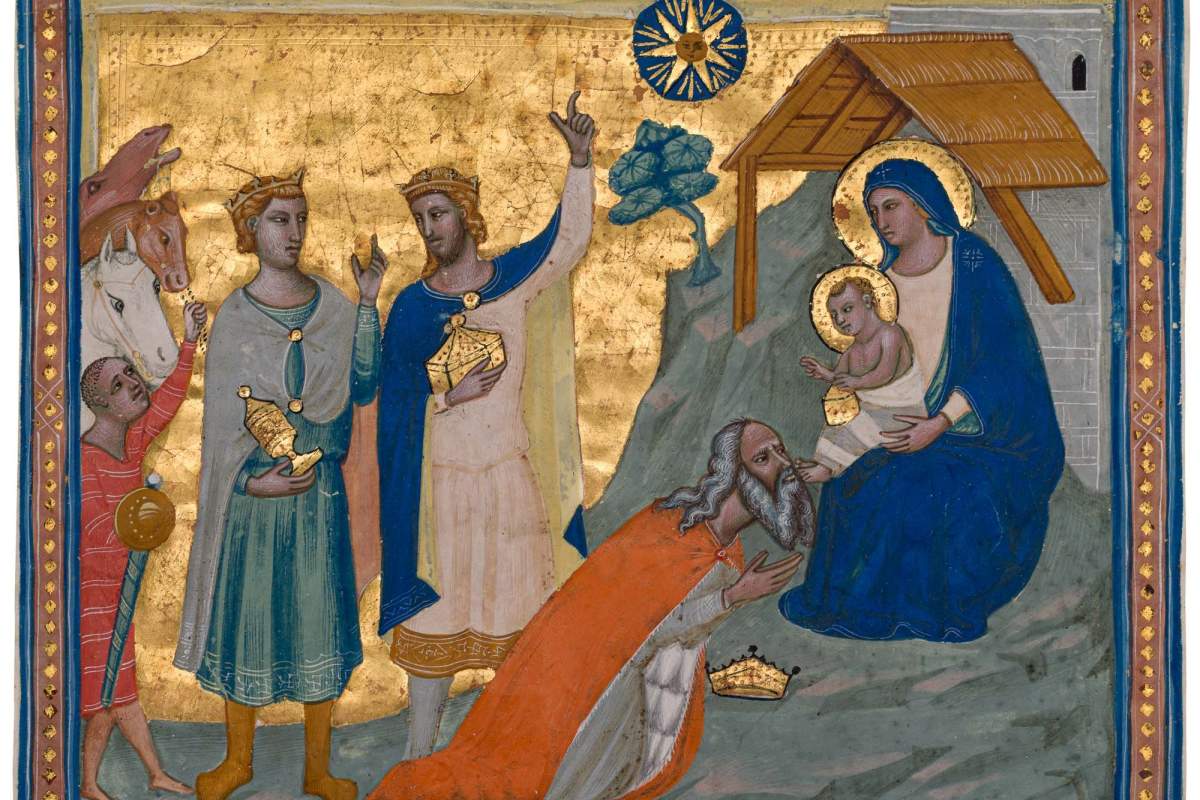
Their story is known by more than a billion people all over the world: Three Magi travelled from the Orient to Bethlehem guided by a star. They found the Christ Child in a humble stable lying in a manger and brought him gold, incense and myrrh. Their story is told quite concisely in Matthew's Gospel 2:1-12. But there is another more detailed and far more embroidered narrative on the events before, during, and after the three magi encountered the Holy Family. It was written by a German Carmelite monk, called Johannes of Hildesheim. His tale is lesser known but very elucidating.
They came from the "three Indias", as Johannes of Hildesheim (1310/20-1375) tells us in his Legend of the Holy Kings. Each of them made up his mind independently to follow the divine star and each brought with him an enormous entourage and riches to greet the new king of the world.
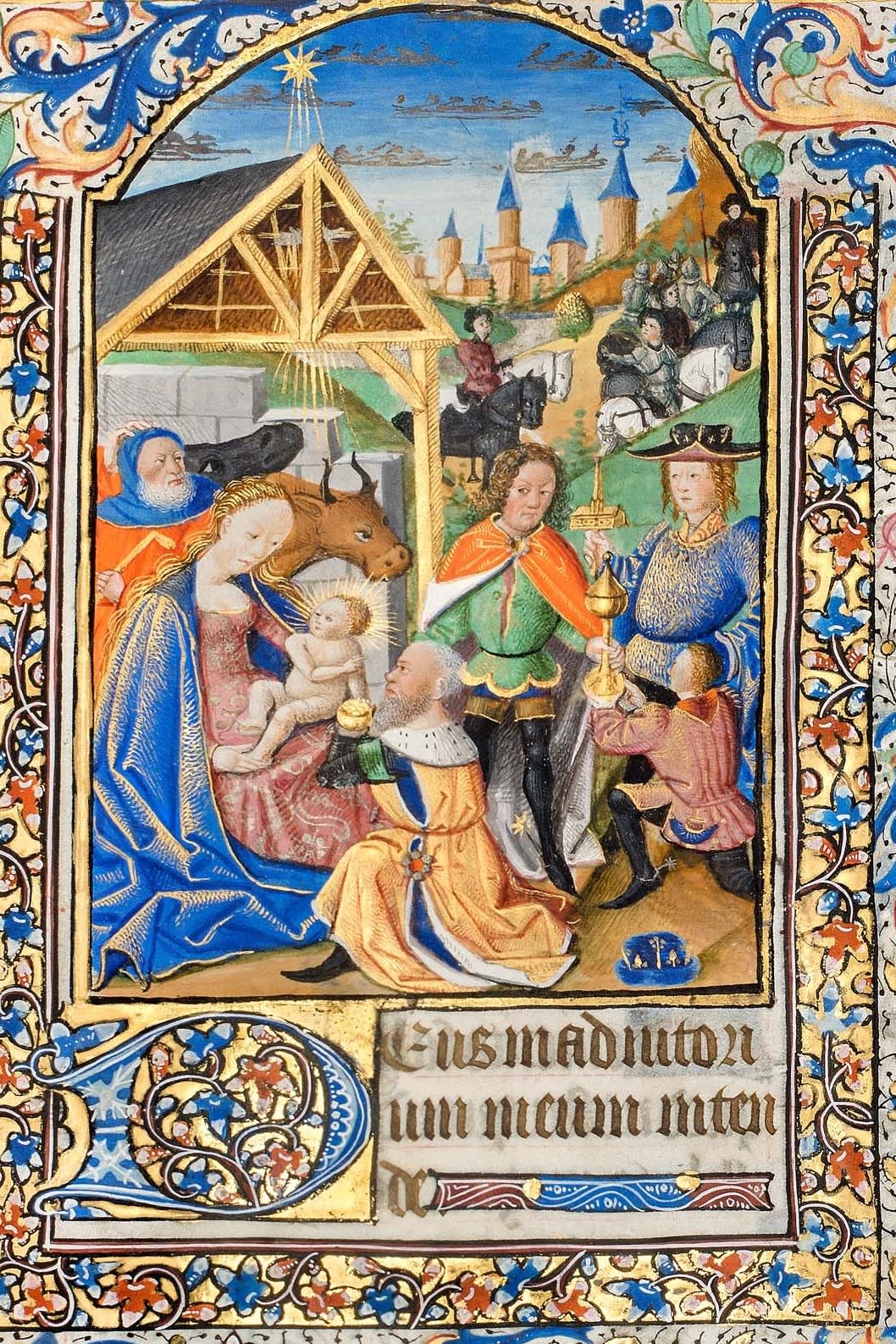
De Nully de Grosserve Hours, Tours or Angers, c. 1450-60, private collection (ex. Dr. J. Günther)
They wandered day and night without ever pausing to rest, to eat, or to drink. The star led them, bright as the sun, and every obstacle disappeared under their feet. Steep trails became even, and high mountains flattened themselves to let the caravans pass. Thus, their journey of thirteen days seemed just like one to them. Close to their final destination the guiding star disappeared and a impenetrable fog fell down. There they stood and waited near the city of Jerusalem, and when the fog finally lifted, they saw one another. There was immediate recognition, tells us Johannes of Hildesheim, although they had never met before. They also understood each other, although they did not speak the same language. But they had the same objective, to welcome the King of the World, and they expected to find him in Herod's palace.
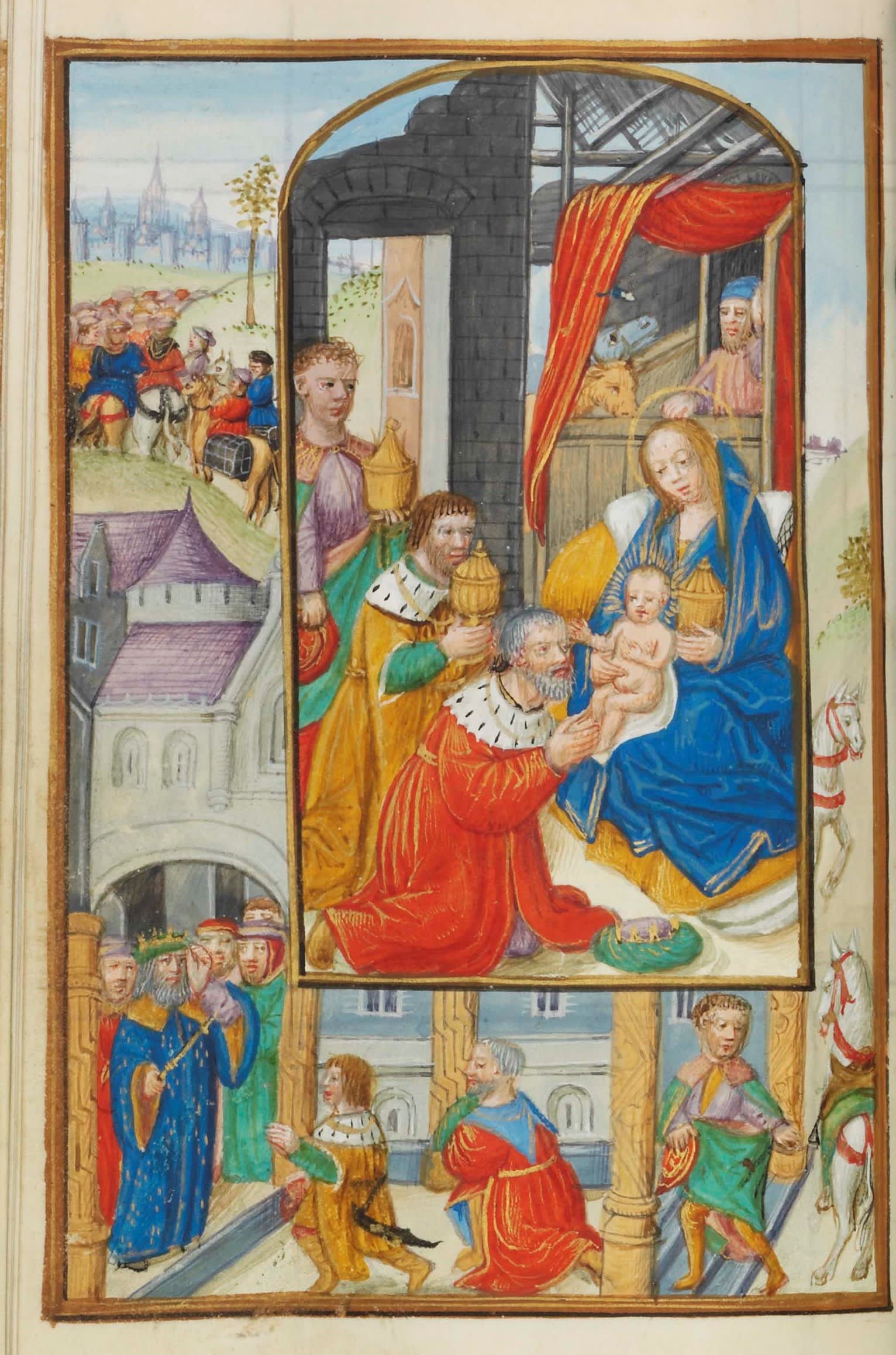
Hours, illuminated by Cornelia Wulfskercke, Bruges, c. 1510, private collection, (ex. Dr. J. Günther)
Bas-de-page: The Magi in Herod's palace
But Herod had no idea what they were talking about and was secretly terrified that a new and powerful ruler would dispossess him of his kingdom and his force.
The three wise men left Jerusalem and followed again the star that had risen to its former splendour and led them to Bethlehem to a humble stable, where they would find the young mother Mary and her child Jesus. They fell down in adoration and handed over their precious gifts: gold, incense, and myrrh.
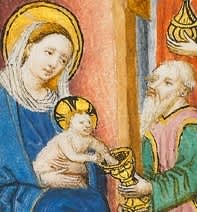
Hours of Margriet Uutenham, Arnhem/Zwolle, c. 1470, - available at Dr. J. Günther Rare Books
The gold stands for Christ's royalty and the incense for his divine nature. The myrrh stands for death, since regardless of his divinity he was also a mortal human.
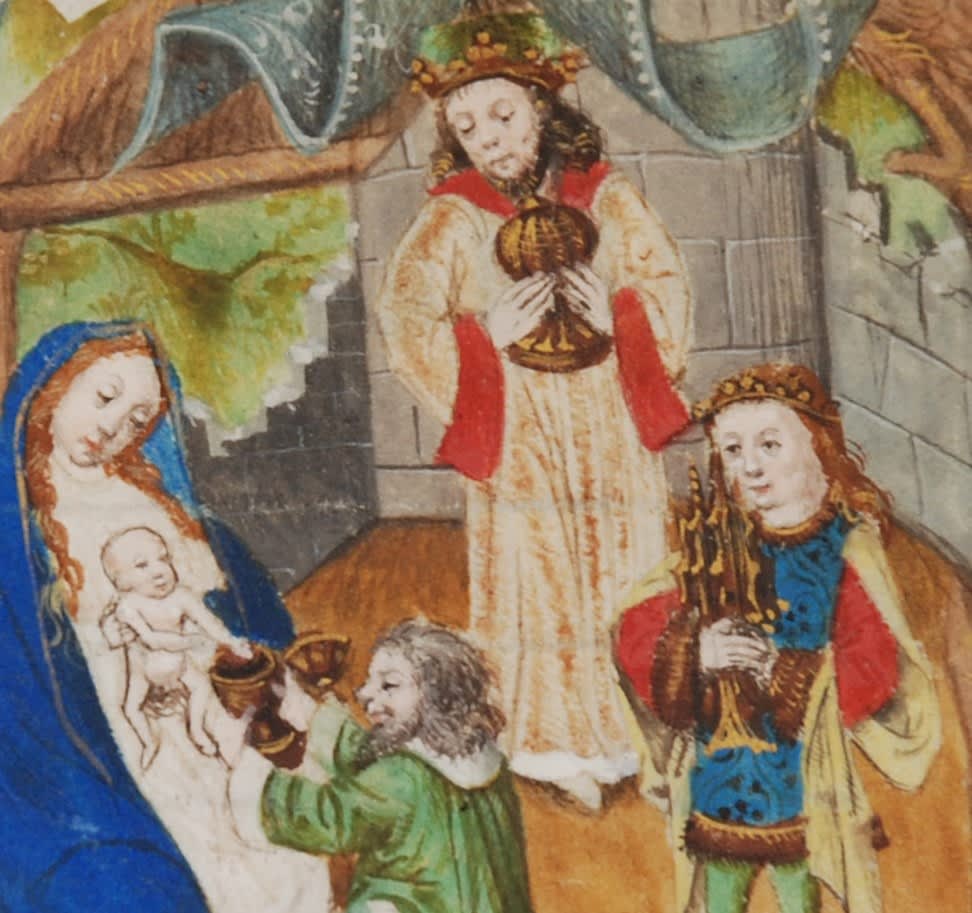
Cutting from a choirbook, Werden, c. 1480-87, (ex. Dr. J. Günther)
According to Matthew and also to Johannes of Hildesheim, the encounter between the new born Saviour and the three men from the Orient was quite brief. But the Magi were deeply touched by it and it influenced the rest of their lives – and their afterlives as well – as we will later see.
Although they came separately, they returned together and decided not to stop at Herod's palace to bring him the happy news of the new-born king. They had initially promised to do so, but an angel had warned them against it in their dreams.
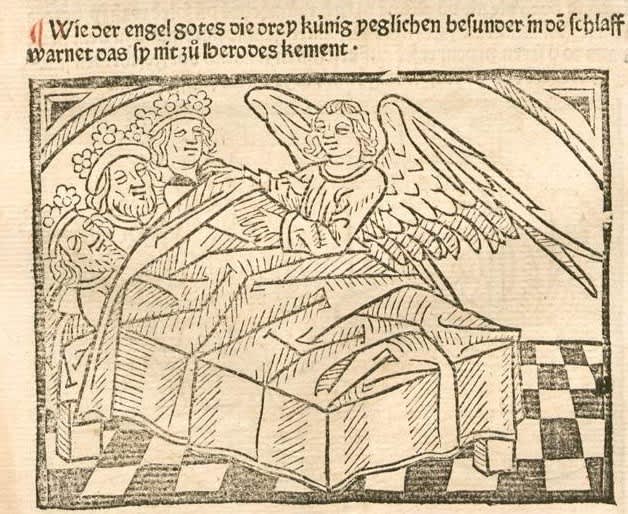
Historia beatissimorum trium regum, printed edition in German, Johannes Prüss, Strasbourg, c. 1479 The Three Magi Dreaming
The outcome of this decision was fatal for many male infants in Bethlehem, as we all well know...

Hours Spitzer-Hachette, Paris, 1480-90, private collection (ex. Dr. J. Günther)
Massacre of the Innocents
Their journey back home was very cumbersome and it took more than two years to return. They travelled together, but on their return had no star for guidance and now needed rest, sleep, and food to keep up their strength. During the journey, they frequently told their tale about the wonderous child and they found many people who listened and were intrigued by the prospect of a new belief. When the Three Magi returned to the mountain Vaus, where the star had been first spotted, they founded a splendid chapel on its peak. There, they would meet annually to recount their spiritual experiences from the previous year. More than thirty years after they had left Bethlehem, the apostle Thomas came to India and the three kings heard about his preaching.
They went to meet Thomas and told him about their divine encounter and he in turn told them what happened in the life of the man they met as a baby; how he wandered from one place to the next in order to preach and to spread his teachings, how he worked miracles, was betrayed, arrested, killed on the Cross, and how he rose from the dead.
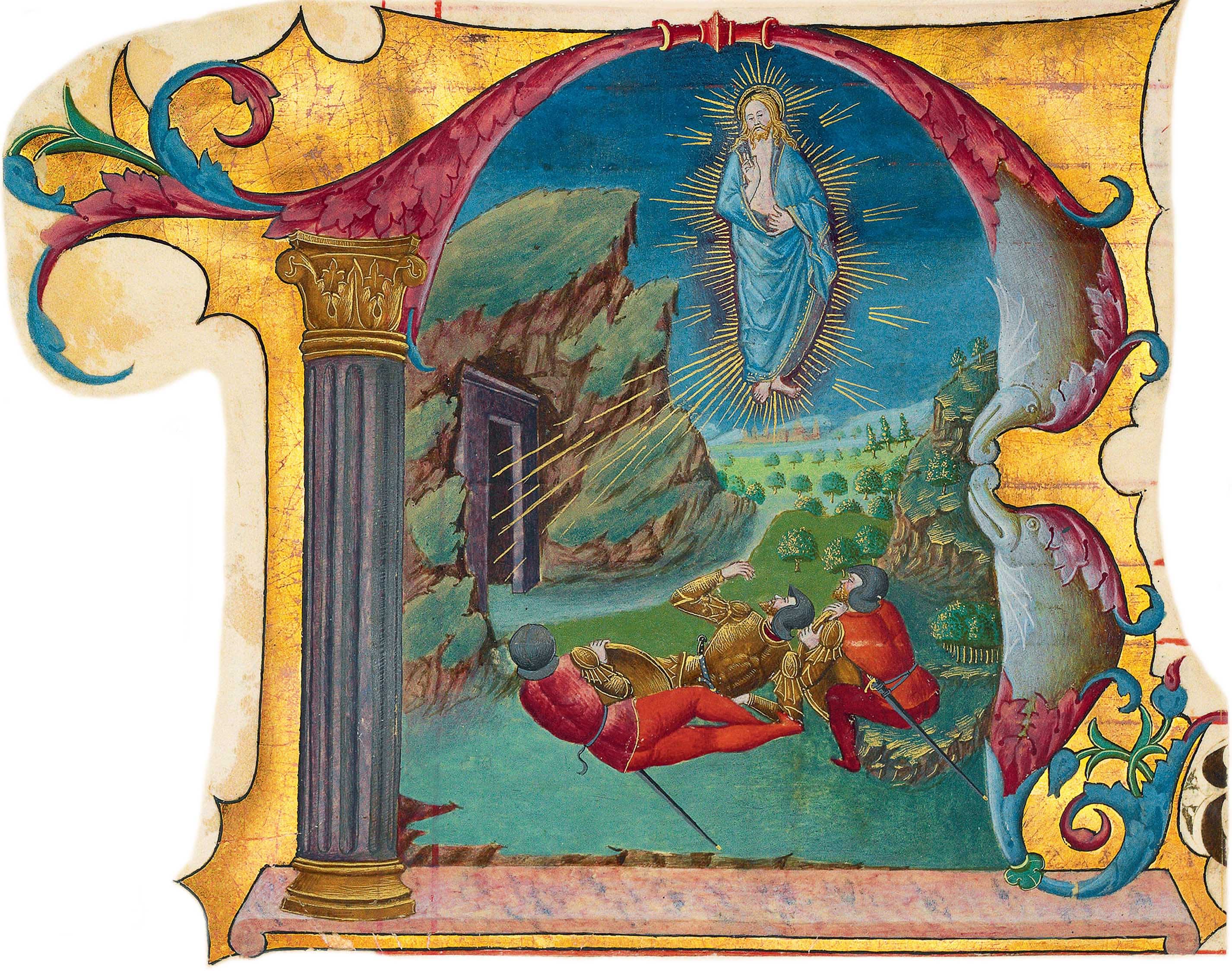
Resurrection, Cutting from a Gradual, Master of the Birago Hours, Milan c. 1460-70
available at Dr. J. Günther Rare Books
Finally, the Magi were baptised and appointed Archbishops by Saint Thomas. Thereafter, all three died peacefully, knowing that their lives' destinies were fulfilled. They were buried together and as long as they were in the same tomb, their bodies would not decompose. They had lain as if sleeping while also working miracles until the day when their bodies were separated and brought home to their respective native countries.
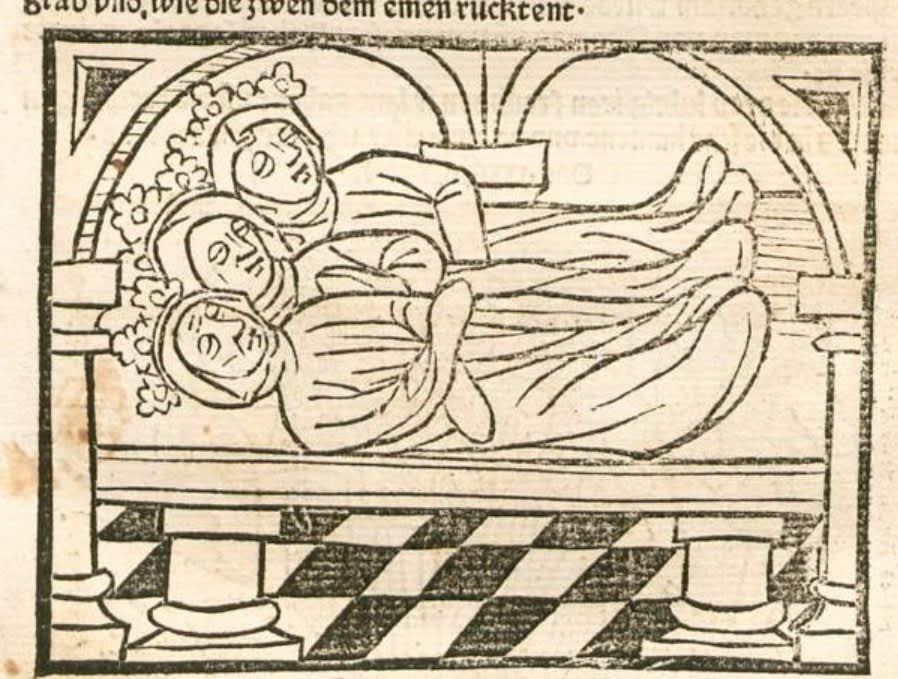
The Three Magi in their Tomb, see above, Johannes Prüss, Strasbourg, c. 1479
More than three hundred years passed and the Three Magi were almost forgotten, until Empress Helena (248/50-c. 330) went on a long, adventurous journey to seek the holy relics. She brought home to Byzantium the Cross and the Nails, the Crown of Thorns, the Manger, the Diapers and Mary's Robe. And finally, she was able to exhume the relics of the Three Magi and put them back into one coffin.
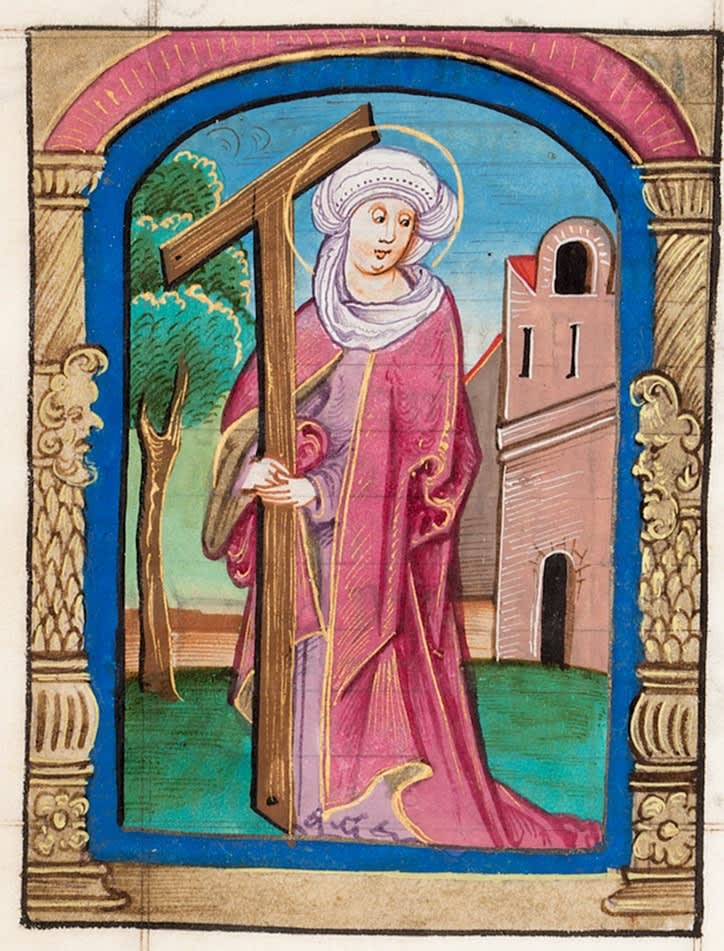
St. Helena, Hofmann Prayerbook, Nikolaus Glockendon, Nuremberg, 1513-14
(ex Dr. J. Günther Rare Books)
Thus, the three wise men had to go on another journey, this time not on horse- or camelback but rather posthumously in a sarcophagus to Constantinople, where they found a new resting place. According to the legend – the bones were later handed over to Milan's Bishop Eustorgius as a gift from Helena's son, Emperor Constantine the Great (270/88-337). The bones remained in Italy, until the 12th century, when Emperor Frederick I Barbarossa (c. 1122-1190) came to Milan during one of his Italy campaigns.
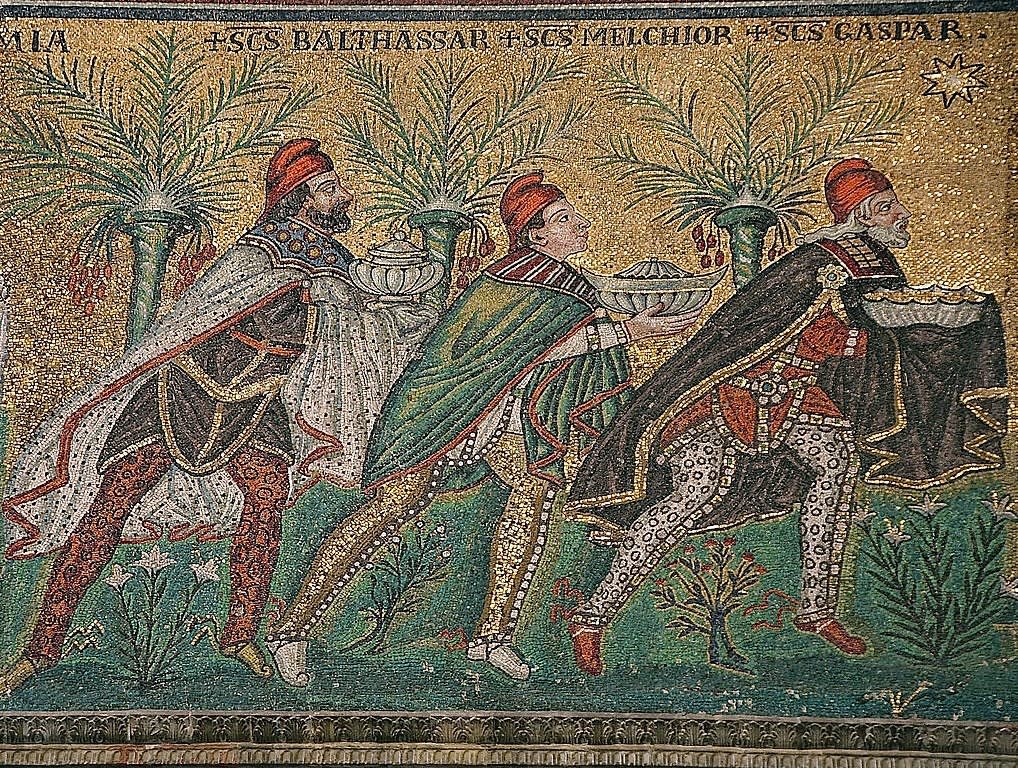
Three Magi, Basilica of Sant'Apollinare Nuovo in Ravenna, Italy
And this is where the fabulous part of Johannes of Hildesheim's narrative ends and reality sets in. In Frederick's entourage, there was a man who was an ecclesiastic, politician, and warlord – all in one person: Rainald of Dassel (c. 1114/20-1167), Archbishop of Cologne and Archchancellor of Italy.
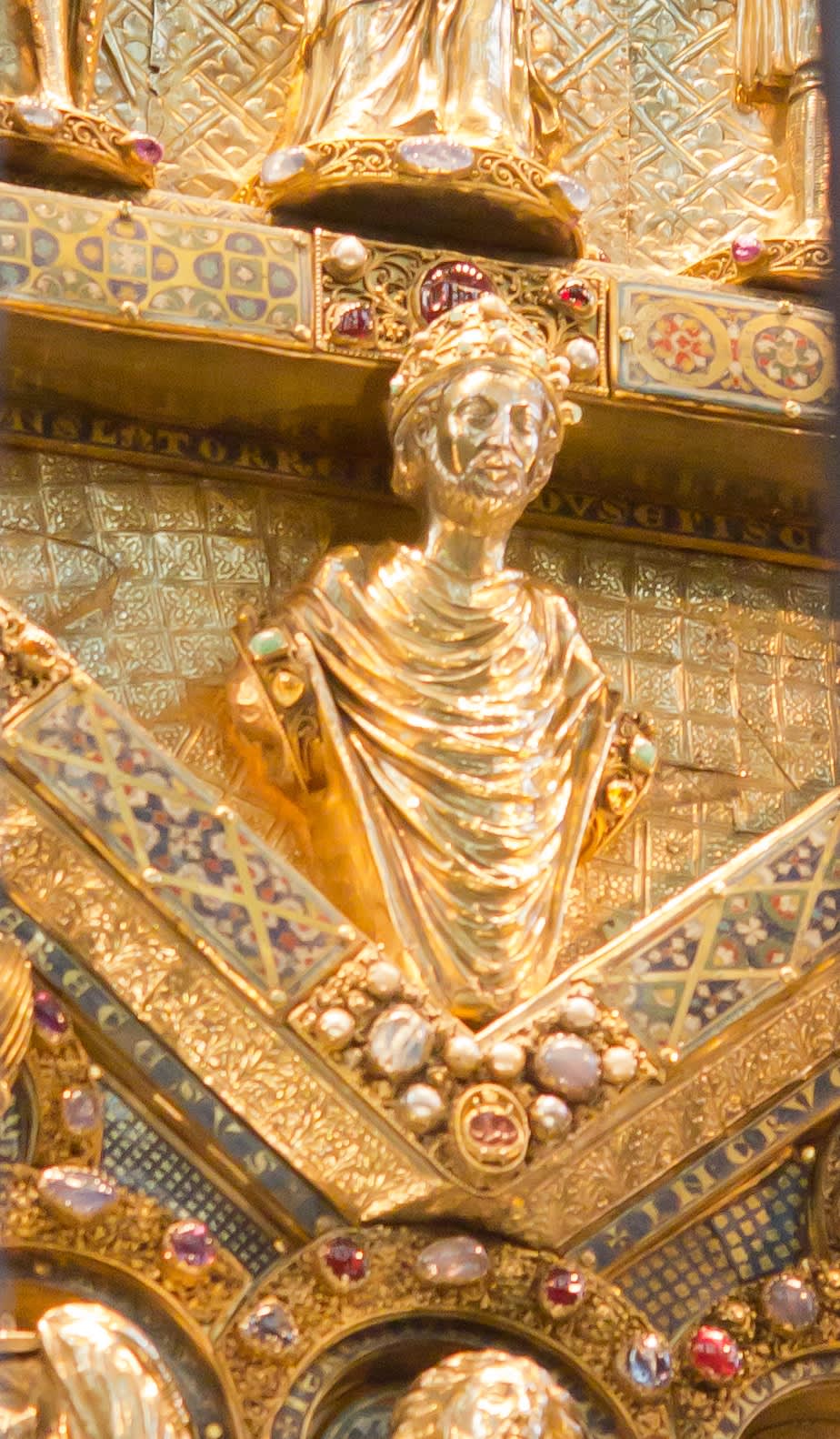
Portrait Rainald of Dassel by Nicholas of Verdun, Cologne, Shrine of the Three Magi
When he and the Emperor became aware that the Three Magi's relics were hidden somewhere in Milan, they did not rest until they found them. Indeed, there are testimonies that they did not hesitate to torture those who knew of the bones' whereabouts. Rainald received them as a "gift" and in 1164 he brought them home to Cologne. The three crowns became a part of the town's crest and Cologne gained status as a 'sacred city'.
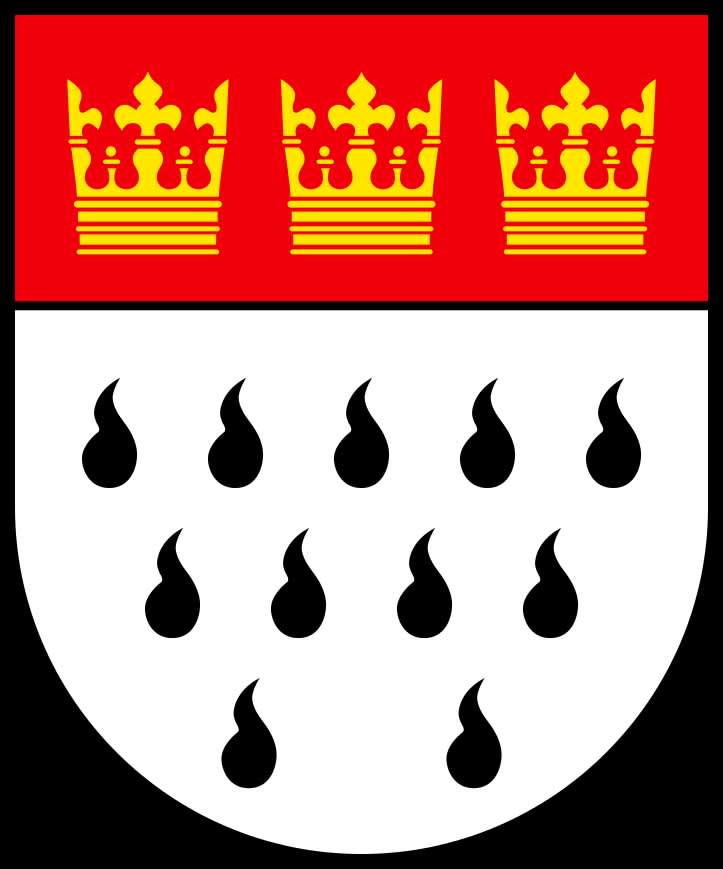
Coat of arms Cologne
Immediately, pilgrims came in droves to see and touch the wonder-working relics and the old Carolingian cathedral soon became much too small for the masses of people that visited daily. Since the visitors were a considerable source of income for the city and for the church, a new cathedral was planned. In 1248, the corner stone for the 'modern' Gothic cathedral was laid and it would take almost 650 years until, in 1880, the massive architectural monument, the exterior sanctuary for the Three Magi, was completed.

Western facade Cathedral Cologne
The inner, gold shrine was manufactured around the time when the new cathedral was planned. It is the largest gold shrine of the 13th century and artfully made by Nicholas of Verdun (c. 1130/40 - after 1205) from Lorraine, the leading goldsmith and enamellist of Mosan art of his time.
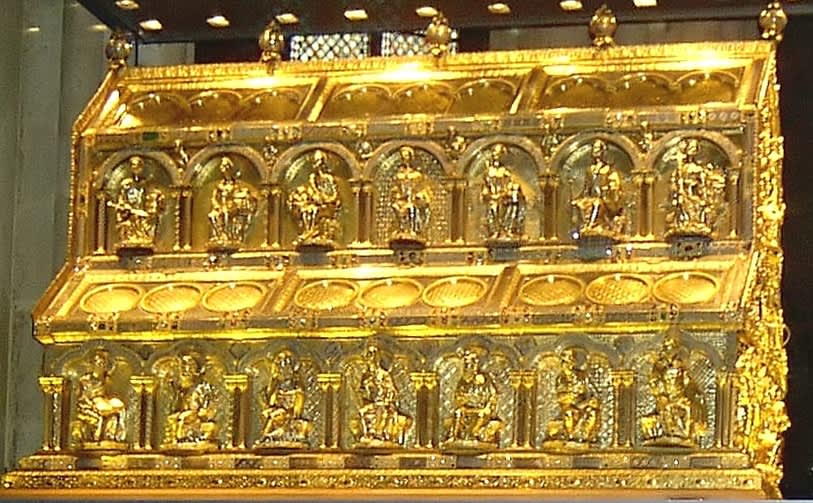
Gold Shrine for the Three Magi, Nicholas of Verdun, 13th cent. Cologne Cathedral
Here the Biblical Magi found their final resting place. Over seven million visitors come each year to admire the site and worship their fascinating memorial. The Cologne Cathedral is a special place where old and modern art communicate: Joseph Beuys (1921-1986) contributed as a very young artist to one of the main bronze doors and Gerhard Richter (1932-) designed one stained glass window.
The story of the Three Biblical Magi who travelled so far to find a poor family in a stable is an unmatched success story that has its impact even today. We find their images in nearly every devotional manuscript and in countless altarpieces.
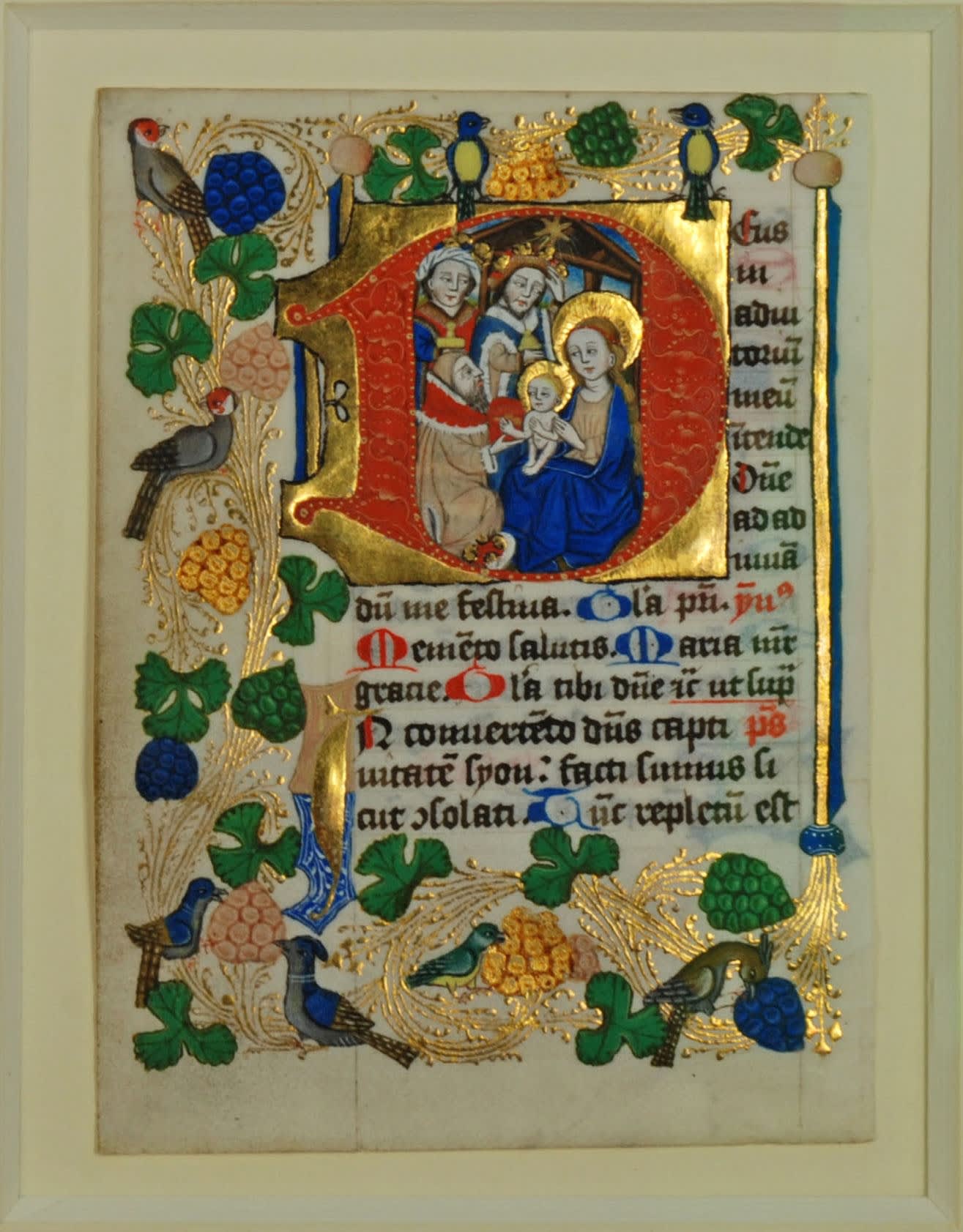
Book of Hours, Cologne, c. 1470/80 (ex Dr. J. Günther Rare Books)
Maybe these figures are still so popular because people love the story of three rich and influencial men kneeling and bowing their heads before a poor family's child.
These three men are a wonderful example of determination on the one hand, and modesty on the other. Johannes of Hildesheim's book is no longer as well-known and popular as it was in the late Middle Ages. He wrote it as a commissioned work for the bicentenary of the relics' translation to Cologne. His version of the story was put into verse in the 19th century by Gustav Schwab at the suggestion of Johann Wolfgang von Goethe. It is worthwhile re-reading it! One of my favourite passages is when the Three Magi meet each other for the first time before the city of Jerusalem – on Mt. Calvary, by the way, where Christ would later be crucified. It is said that although they had never met before and did not speak the same language, they recognised and understood each other and had a common goal – something we should keep in mind: we should recognize and respect each other as humans who should all have the same goal: peace on earth.
Merry Christmas to all!



